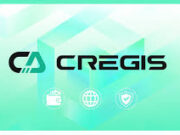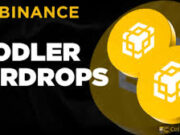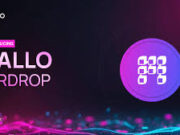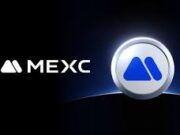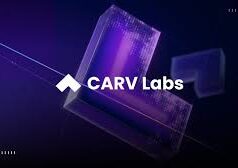Fufuture has officially launched the public beta of its on‑chain one‑click copy trading system, supporting a wide range of ERC‑20 tokens and even real‑world asset (RWA) tokenizations. This means users can now automatically mirror trading strategies via smart contracts — directly on the blockchain — using both traditional digital assets and tokenized real-world collateral.
What Is Fufuture’s Copy Trading All About?
At its core, copy trading allows one trader (“the follower”) to replicate the trades of a more experienced or successful trader (“the leader”). This model is common in centralized and off-chain platforms (think of Bitget, Binance, Poloniex, etc.) (Bitget)
But Fufuture brings innovation by making the process purely on-chain:
- Trades are executed via smart contracts, so once a user opts in, the copying happens automatically and trustlessly.
- There’s no need to trust a centralized intermediary: the logic lives in the code, not on a server.
- The system supports ERC‑20 collateral, meaning a variety of tokens can be used to back positions. According to Fufuture’s announcement on Twitter/X, any ERC-20 token is eligible. (X (formerly Twitter))
Why Including RWA Assets Is a Game Changer
What sets this beta apart is support for real‑world assets (RWA). Thanks to Fufuture’s integrations and infrastructure:
- Tokenized RWAs (for example, financial instruments like SHIFT Stocks) can be used as collateral in copy-trading trades. (KuCoin)
- This bridges DeFi and TradFi: you can now replicate strategies that involve not just crypto, but real-world, regulated assets.
- It potentially improves capital efficiency: rather than liquidating or converting tokenized real-world assets, you can use them directly to gain derivatives exposure.
Fufuture’s roadmap suggests a continuing expansion of its RWA ecosystem, including assets like gold, silver, and foreign exchange indices. (KuCoin)
How the Mechanism Works
The system isn’t magic — but it’s pretty clever. Here’s a breakdown:
- Leader strategy deployment: Experienced traders (or smart-contract‑strategy creators) set up their strategies on Fufuture via smart contracts.
- Follower opt-in: As a follower, you choose which leader’s strategy to copy. You link your collateral (ERC‑20 tokens or tokenized RWA) to the smart contract.
- On-chain replication: Every time the leader opens, adjusts, or closes a position, the smart contract replicates those actions in the follower’s positions, according to predefined rules.
- Settlement and fees: Gains and losses settle in the collateral asset. Fufuture’s design avoids forced liquidation — instead it uses a perpetual‑options‑style model where positions can be maintained by paying a daily premium. (ChainCatcher)
- Oracles & asset support: The protocol uses a multi‑oracle aggregation system (e.g., Chainlink, Pyth, Apro) so that as long as an asset has reliable price feeds, it can be used in these derivative strategies. (OKX)
Advantages of On‑Chain Contract Copy Trading
Transparency and Trustlessness
Because smart contracts execute the trade copying, users don’t need to worry about middlemen messing with orders or performance data. Everything is on-chain, verifiable, and transparent.
Flexibility in Collateral
Unlike many DeFi derivatives platforms that require stablecoins or specific tokens, Fufuture allows any ERC-20 token and even tokenized real-world assets to serve as collateral. This flexibility opens up creative capital strategies.
Better Risk Management
Fufuture’s “perpetual-options” approach means there’s no liquidation cliff. Rather than being liquidated during adverse moves, you maintain your position by paying a daily premium, which makes risk more manageable and less binary. (ChainCatcher)
Broadened Asset Universe
By enabling RWAs as collateral, Fufuture pushes DeFi into new territories. Traders can build strategies that factor in tokenized real-world stocks, commodities, or indexes — all mirrored on-chain
Potential Risks and Considerations
While exciting, this system is not without its challenges:
- Smart contract risk: On‑chain copying depends heavily on the robustness of Fufuture’s contracts. Bugs or exploits could have serious consequences.
- Oracle risk: Since pricing oracles feed into strategy execution, inaccuracies or manipulation could impact copy trading outcomes.
- Liquidity risk: If RWAs are used as collateral, the underlying liquidity or volatility of those tokenized assets might differ from crypto — this could make strategies less predictable.
- Strategy risk: Copying is powerful, but a copied strategy could go wrong. Followers should understand the leader’s risk profile, logic, and how their capital is being deployed.
Why This Matters for DeFi
This move by Fufuture is meaningful on several fronts:
- Bridging DeFi and TradFi: By allowing RWAs in derivatives copy trading, Fufuture supports a more seamless integration between tokenized real-world finance and decentralized finance.
- Democratizing strategy replication: Novice users or less active traders can tap into more sophisticated strategies without building them from scratch.
- On-chain innovation: The use of perpetual-options style mechanics, combined with on-chain replication, showcases how creative DeFi products are evolving.
- Regulatory relevance: With its RWA expansion, Fufuture is aligning with tokenization trends and regulatory frameworks (e.g., MiCAR compliance through SHIFT Stocks). (KuCoin)
Comparisons: How It Stacks Up Against Traditional Copy Trading
If you’re familiar with copy trading on centralized platforms:
- On Bitget, you can copy futures strategies from lead traders, but it’s off-chain and custodial. (Bitget)
- On Poloniex, futures copy trading is supported, and followers automatically replicate trades, but again, the system depends on a centralized architecture. (support.poloniex.com)
- On Bybit, their copy-trade system also involves copying expert trader actions in a CeFi environment. (Bybit)
Fufuture’s difference? All of this happens on-chain, collateral stays in your control (in the sense that it’s token-based), and execution logic is transparent. Rather than trusting a platform to mirror trades, you’re trusting code.
What’s Next for Fufuture
Looking ahead, Fufuture seems poised for even more innovation:
- They plan to expand RWA support to include traditional financial instruments like gold, forex, and more tokenized assets. (KuCoin)
- Their roadmap shows ambitions for cross-chain integration, aiming to support more than 30 chains by the end of 2025. (ChainCatcher)
- As the beta progresses, we can expect more leaders (strategies) to emerge, especially those that combine crypto derivatives with real-world exposure.
- Further security audits and improvements to oracles will likely be crucial, especially as higher-value RWA collateral is adopted.
Why You Might (or Might Not) Try Fufuture’s Copy Trading Beta
You might want to try it if:
- You already hold ERC‑20 tokens (or tokenized RWA) and want to put them to work in derivatives.
- You like the idea of following expert strategies but don’t trust centralized intermediaries.
- You believe in the future of tokenized real-world assets and want exposure via derivatives.
- You’re comfortable with on-chain risk and are willing to experiment in a beta.
You might hold off if:
- You are risk-averse about smart contract bugs or oracle manipulation.
- You don’t have enough capital in ERC-20 or RWA tokens to meaningfully allocate to copy trading.
- You prefer fully off-chain or centralized platforms with insurance or guarantee features.
- You’re unsure about leader strategies and don’t have the time to research them.
Final Breakdown
Fufuture’s public beta of on‑chain contract copy trading marks a significant milestone in DeFi. By combining the replicability of copy trading with the transparency and composability of blockchain — and by supporting both ERC‑20 and tokenized real-world assets — it opens up new possibilities for capital efficiency, strategic automation, and cross‑domain finance.
If the beta succeeds, it could redefine how retail users and more advanced traders alike engage with decentralized derivatives: no centralized trust, on-chain execution, and diversified collateral. It’s a bold vision — and one worth watching as the RWA wave continues to swell.
Sources:
- Fufuture’s on‑chain copy trading announcement on Twitter/X (X (formerly Twitter))
- Fufuture’s protocol overview on Bitget Web3 DApp portal (Bitget Wallet)
- Analysis of Fufuture’s perpetual‑options design and long-tail assets (ChainCatcher)
- Fufuture’s roadmap & RWA integration via SHIFT Stocks (KuCoin)
- Fufuture’s derivatives paradigm and decentralized trading model (ChainCatcher)
- Copy trading explained (centralized) (Token Metrics)



